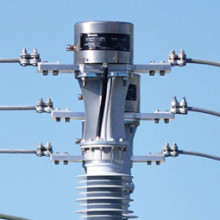
Arteche's optical current transformers are among the components of the most promising research projects in this technology on the European and American continents
Nuclear fusion is a clean, safe and sustainable energy source that is becoming a global priority and a key element to face energy and climate challenges
Mungia (Bizkaia), 12 de diciembre de 2023.- Arteche, a global leader in solutions for measuring and monitoring the quality of electrical energy, has positioned itself as the option chosen by the most advanced research entities in the United States and Europe in the nuclear fusion sector, a key technology for meeting climate challenges through clean energy. In this way, the company boosts its growth, favored by the good investment momentum in the electricity sector, through a solid business strategy and with significant opportunities for the energy transition.
Nuclear fusion is getting closer and closer to becoming a reality thanks to these cutting-edge projects that, both in the United States and in Europe, count Arteche's optical current transformers among their components.
The success of these projects will be a technological milestone that could change the way electricity is produced and consumed worldwide, meeting the world's energy demand in an affordable and sustainable way thanks to clean energy generation.
Nuclear fusion: the clean energy of the future
Unlike nuclear fission, fusion does not require radioactive or scarce materials such as fuels. Instead, it uses materials that are abundant in the earth. With only a minimal amount of these, it is capable of producing the energy equivalent to a person's lifetime consumption. It is considered a clean, safe and sustainable energy source and is becoming a global priority; a key element in addressing energy and climate challenges.
Nuclear fusion occurs naturally in the Sun because of its extremely high pressures and temperature. However, it is a process that produces temperatures far higher than any solid material could withstand.
On this point, Arteche's non-conventional transformers, based on optical technology, offer a differential value in some of the most promising research projects being developed both in Europe and the United States.
World leader in optical technology
In order to provide this technology to its customers, Arteche works with the Australian company Smart Digital Optics. SDO is a reference in the field of fiber optic current sensors for the electric power sector and is one of the first companies to incorporate and patent this type of optical technology in energy control and measurement systems.
Through its Australian subsidiary, Arteche offers a fiber optic alternative that allows electrical currents to be measured more accurately and sustainably. This type of technology facilitates the digitization of substations, creating safer working environments and reducing construction, operation and maintenance costs.
Arteche's acquisition of SDO was part of the company's inorganic growth strategy. In this regard, in addition to SDO, Arteche acquired Esitaş in 2021, which has plants in Turkey and Indonesia and is dedicated to the manufacture of medium and low voltage instrument transformers, and incorporated Hitachi Energy into Arteche Gas Insulated Transformers (AHIT), a subsidiary that has a plant in Vitoria-Gasteiz. The Japanese company acquired 49% of its shares, while Arteche continues to own 51%.
Positioning itself as a key player in nuclear fusion projects allows Arteche to remain at the forefront of the energy sector when all trends point towards this as fundamental in challenges such as energy transition and process decarbonization.






